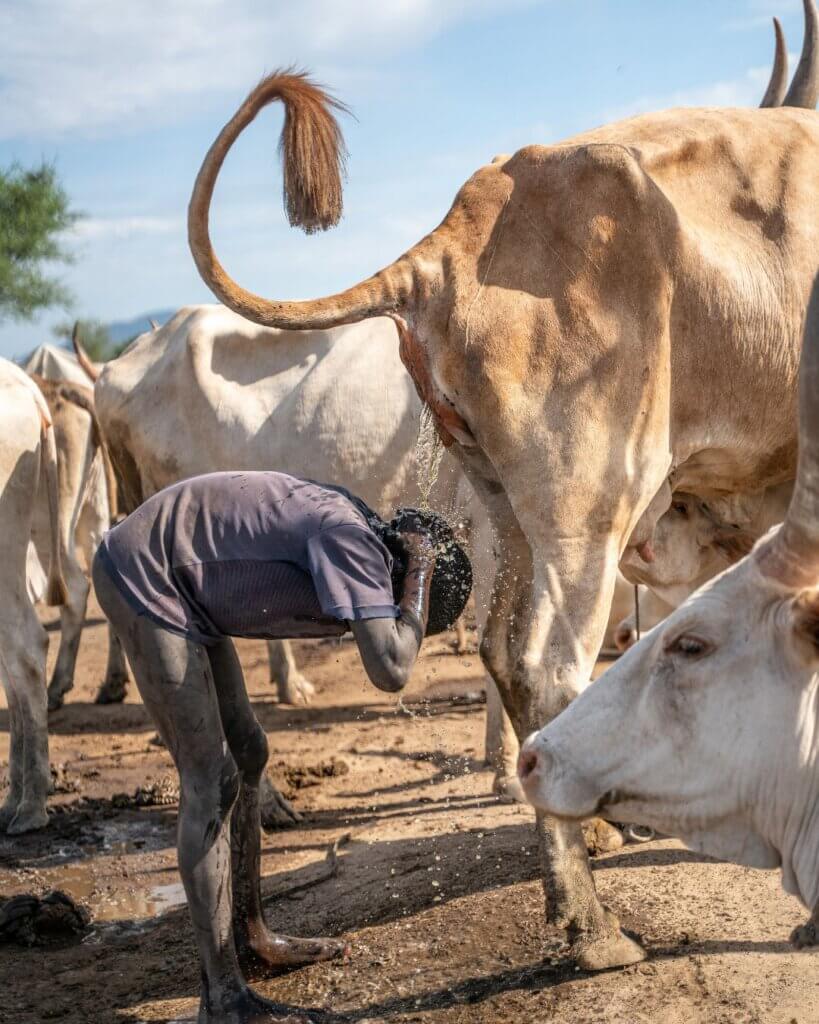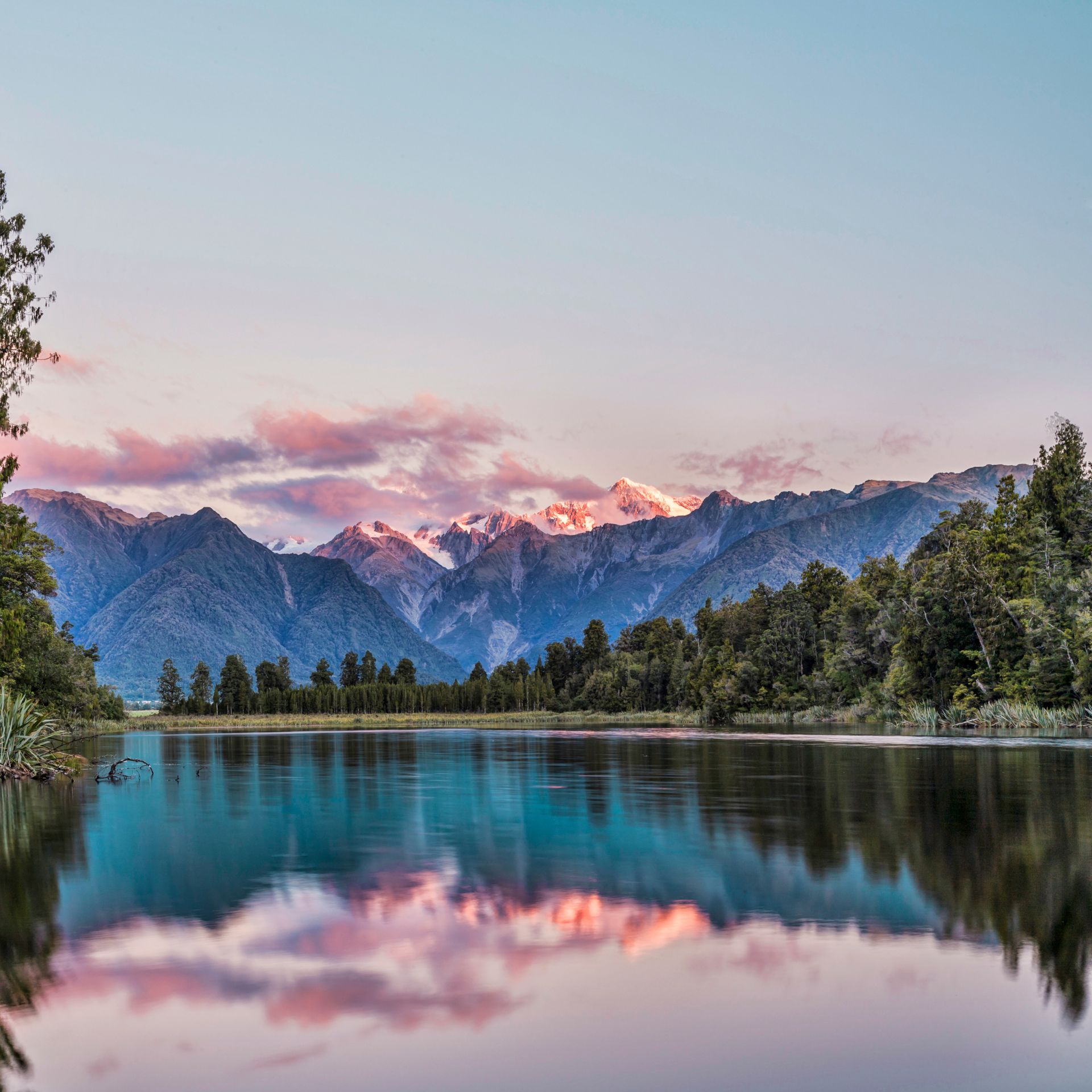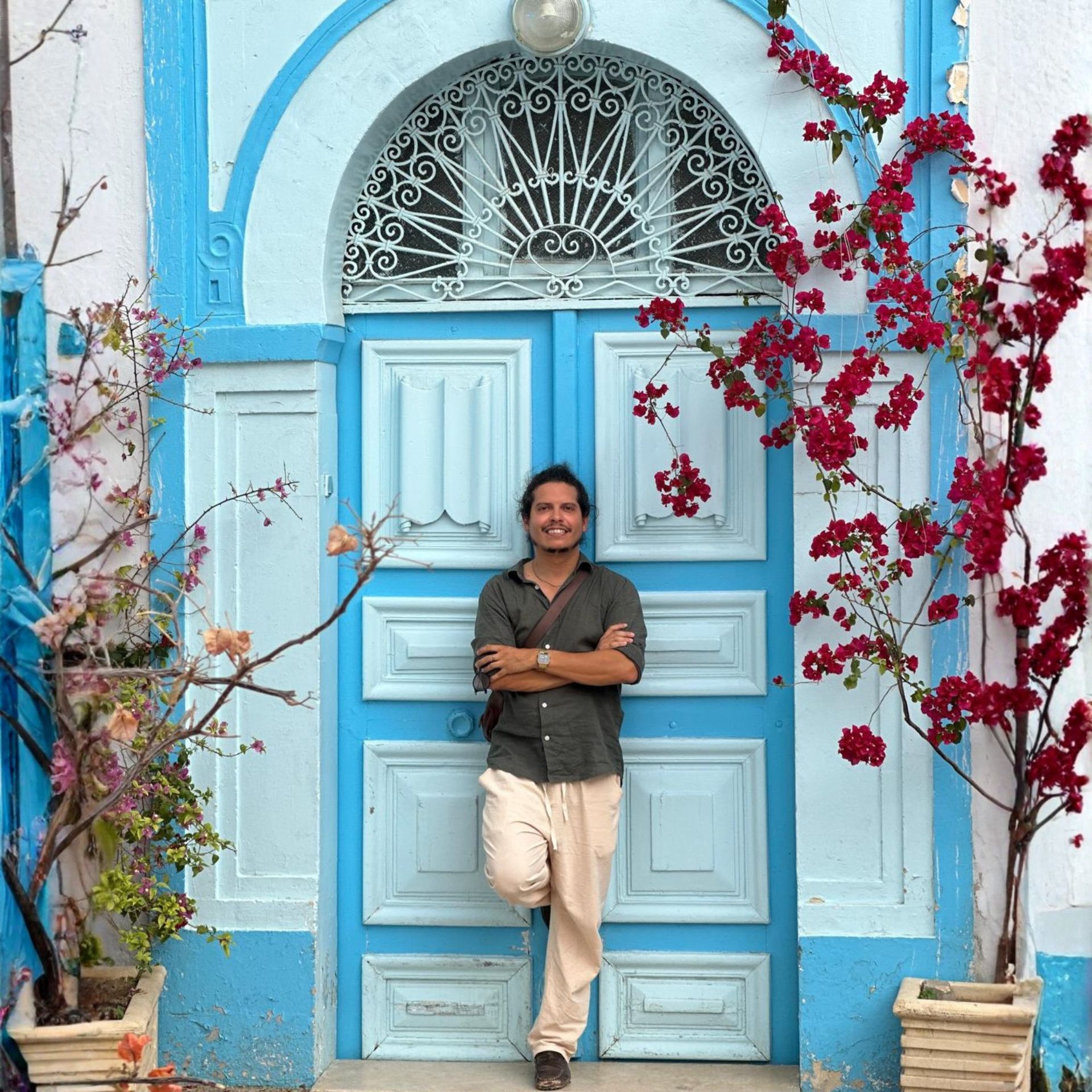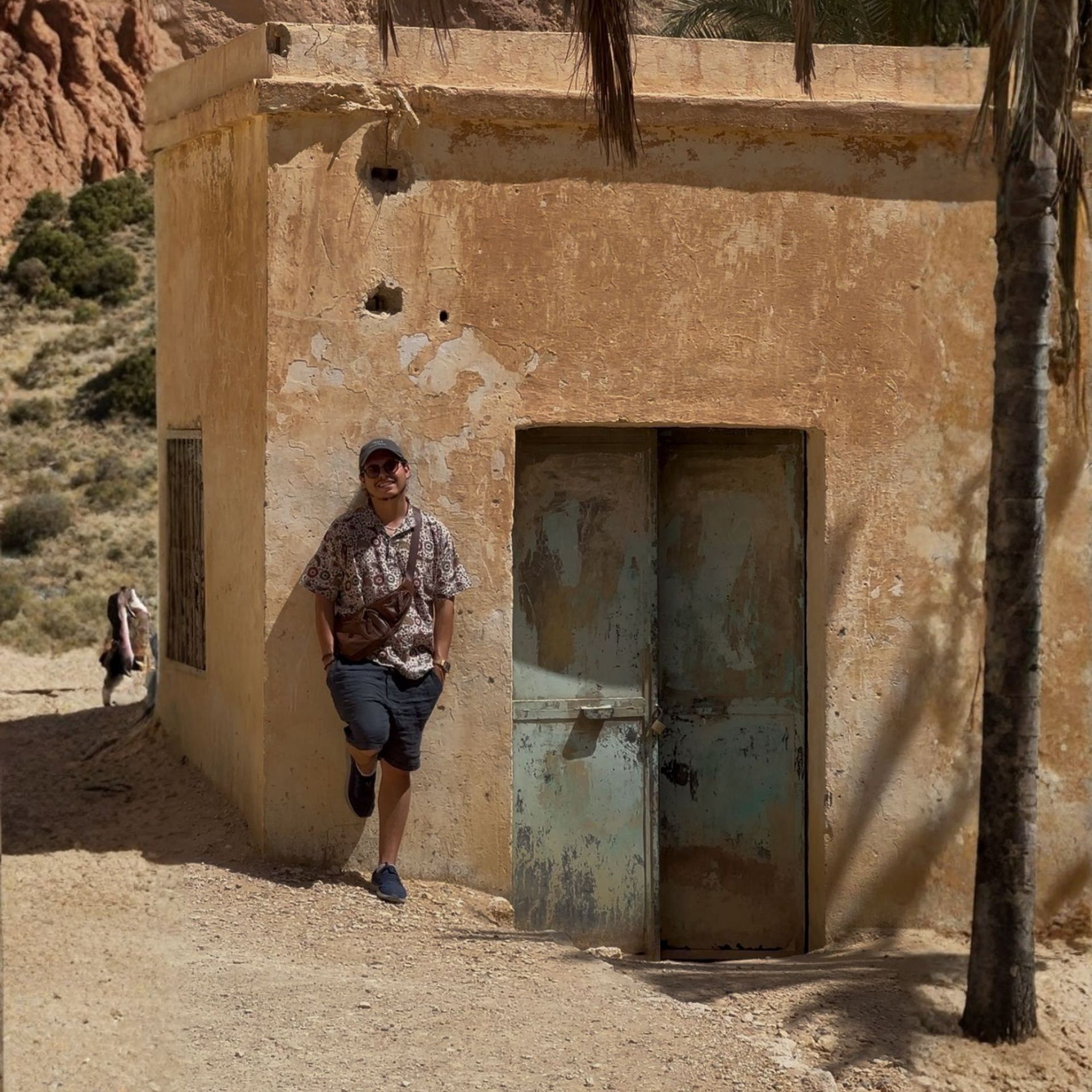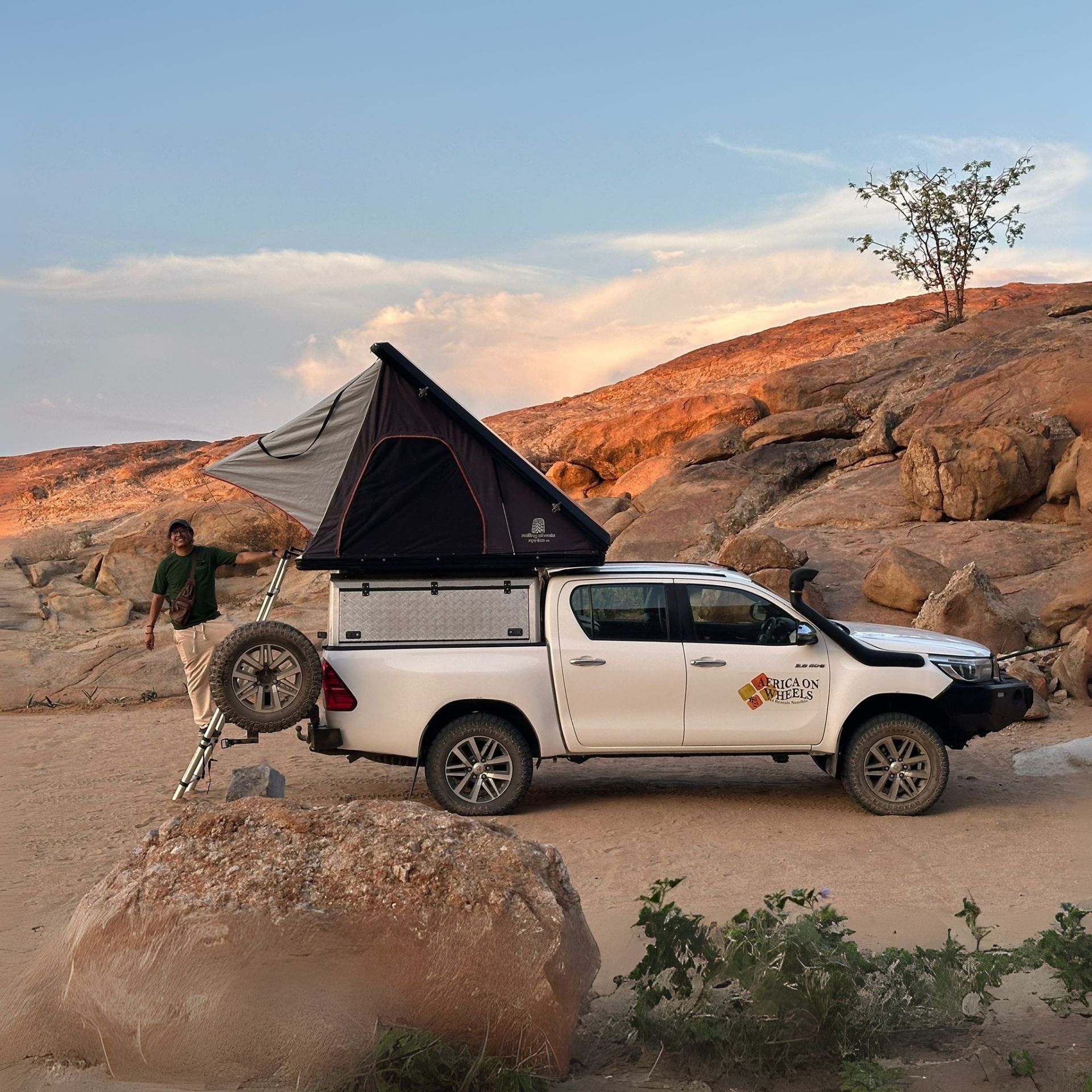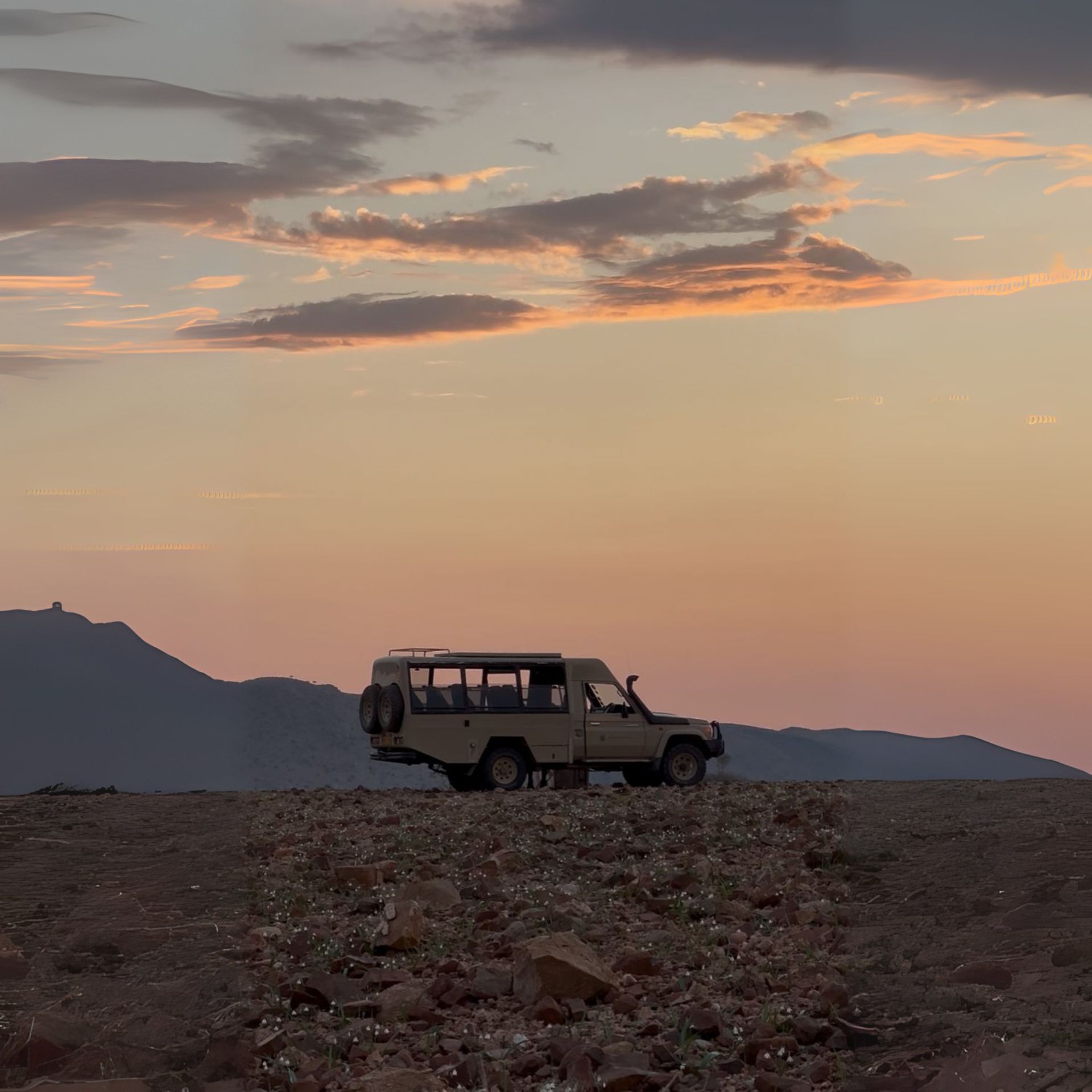From obtaining a visa to planning the perfect itinerary, this travel guide provides all the essential information for your visit to South Sudan trouble-free.
Venturing into South Sudan is not a typical travel experience. Located in the heart of East Africa, South Sudan is the world’s youngest country and, therefore, a place of strong contrasts and complexities. From its still untouched rich cultural heritage to its turbulent recent history, South Sudan is a destination that promises an unforgettable adventure but also involves a few challenges.
In 2022, I had the opportunity to visit South Sudan and experience firsthand the difficulties of planning a trip in which there is basically no information online for independent travelers. Still, after lots of asking, researching, and contacting other travelers who had already visited this country, I was able to explore South Sudan the way I wanted.
In this guide, I want to provide you with a step-by-step idea of how you can also start planning your trip to South Sudan. What are the concerns and maybe even dangers involved, and how can you make the most of a short stay in this uncharted country?
Read more: Mali uncovered – Best experiences to do in Mali
Read more: Best things to do in Hargeisa, Somalia
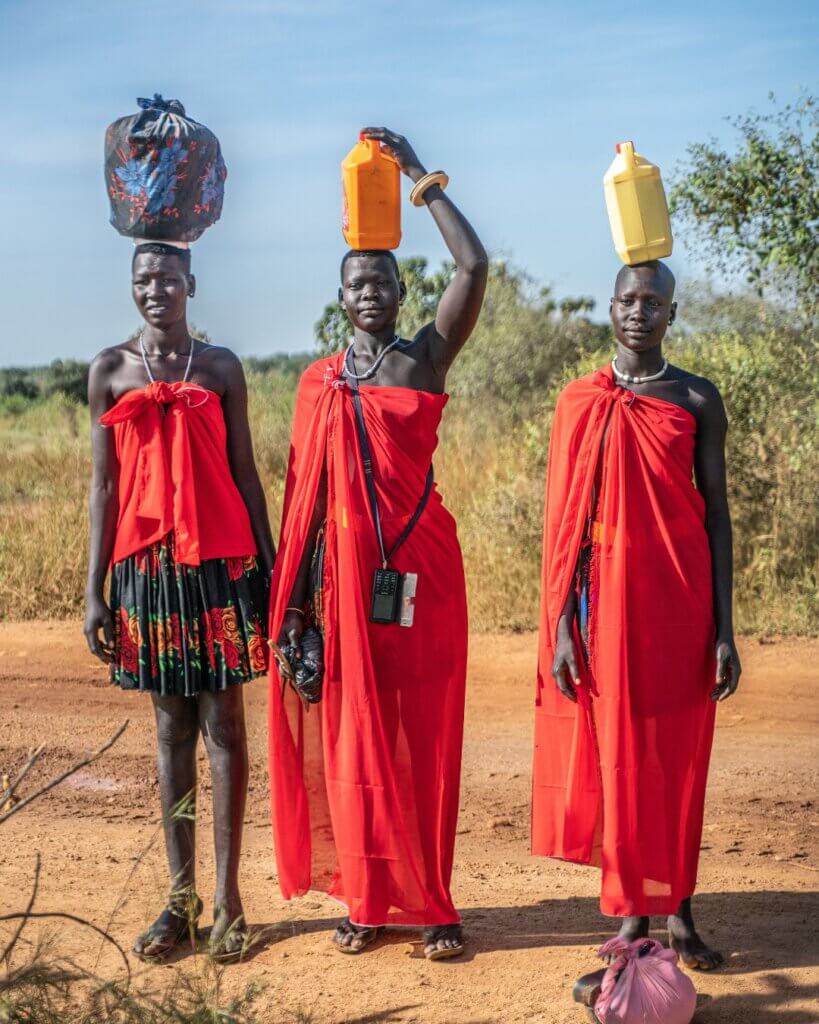
Understanding South Sudan
Being the newest nation on the planet doesn’t come without its own challenges. South Sudan gained independence from Sudan in 2011 after decades of brutal civil war due to religious differences. Unfortunately, gaining independence led to another internal conflict, with clashes over political power, control of resources, and tribal divisions.
Despite a few peace agreements in recent years, complete stability is unlikely in the near future. South Sudan is not currently in an active war; there are no bombings or kidnappings occurring in the country. However, the situation remains tense, which can make traveling around the country somewhat challenging.
Furthermore, with very basic infrastructure and virtually no tourism, traveling in South Sudan is markedly different from traveling in any other country in the world. Once we left Juba, we had to carry our own tents, food, and water. Electricity? Well, we knew from the beginning that was also out of the question.
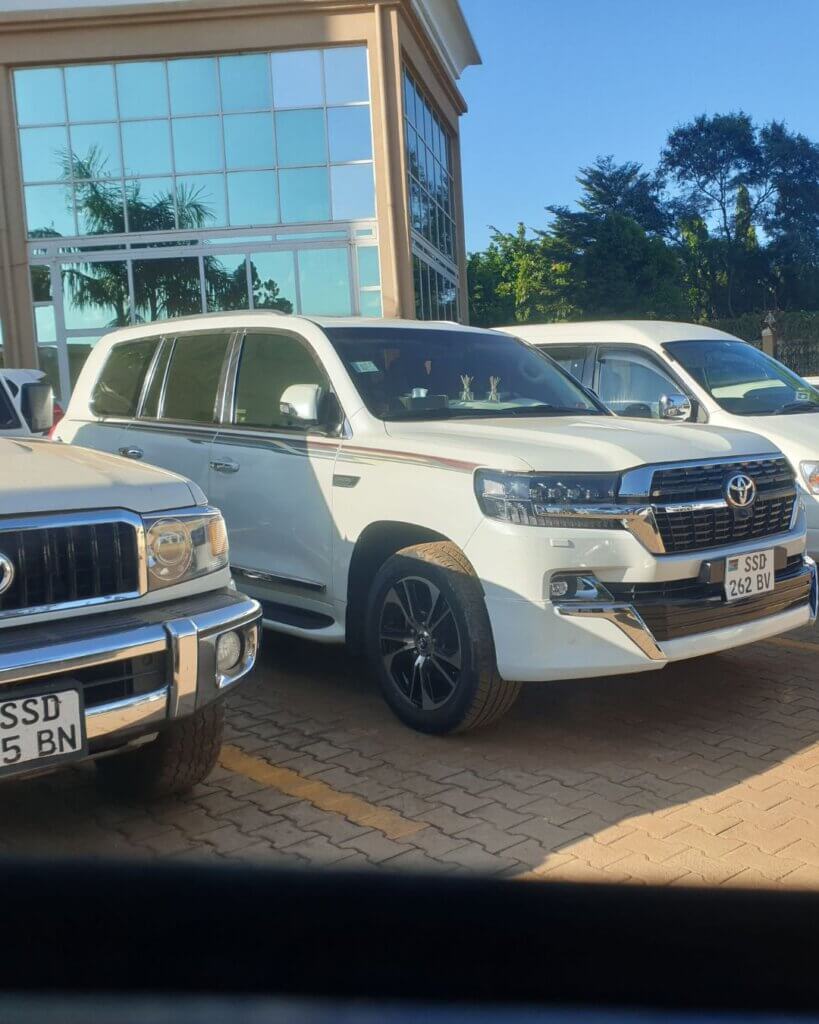
Before the Trip
Finding information on planning a trip to South Sudan via Google is an extremely challenging task. Aside from one personal blog and a few websites belonging to tour agencies that organize group trips to the country, there’s virtually no guidance on what to do, see, and most importantly, how to start planning a trip to this destination.
So lets dig into that:
Independent Traveling
Now, for the not-so-great news: planning a completely independent trip to South Sudan appears to be a nightmare, if not verging on the impossible. There’s a lack of information regarding public transportation between cities, and hundreds of checkpoint controls are scattered across the nation.
Undertaking an independent journey means securing all permits independently, registering after your arrival, navigating its politicians’ rather corrupt bureaucracy, and dealing with equally corrupt checkpoints where you may find yourself paying for no apparent reason. Not to mention the pressing question: what exactly are you going to see?
Regardless of your destination within South Sudan, approvals are a necessity. If you intend to visit a South Sudanese community, you’ll need to arrange negotiations with the community’s chief in advance.
We had to wait in a car 3 hours until our guide talked to the Mundari community chief after our arrival.
I’ve also heard stories of independent travelers arriving in Juba only to be detained at the airport and pressured into paying bribes as high as $200 for inexplicable reasons. Given that most travelers arrive with big sums of cash, officers are inclined to find any pretext to halt you and extract money.
However, there’s no need to be overly alarmed; my intention is to shed light on the complexities of independent travel.
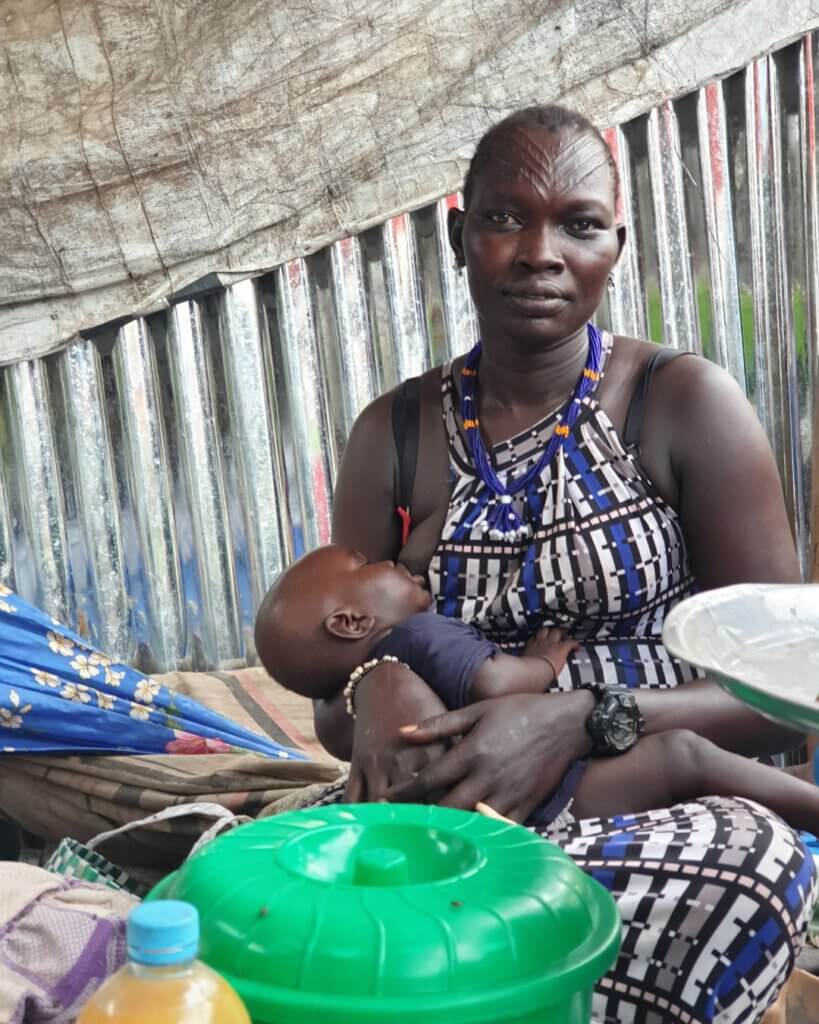
Private and Group Tours
Thankfully, there are more manageable alternatives for your journey to South Sudan. You can opt for one of the group tours provided by companies like Lupine Travel or Young Pioneers. These two organizations (among others) offer 5-6 day tours for approximately 2500 EUR. While these tours are packed and somewhat pricey, they offer a hassle-free alternative that allows you to experience the country without grappling with numerous logistics.
Here’s some information on major companies offering tours to South Sudan, links to their sites, and their prices:
- Lupine Travel: 6 days for 2100 GBP
- Native Eye: 9 days 3900 GPB
- Penguin Travel: 8 days for 2000 EUR
- Young Pioneer Tours: 4 days for 1500 USD
NOTE: Keep in mind that these companies generally employ the same local guides you’ll find listed below. The difference lies in the fact that you’ll be dealing with a Western company that understands the expectations of Western travelers and offers substantial support.
For a more adventurous approach, you can seek out a private local tour operator and arrange a tour with them. These operators are somewhat tricky to find through a Google search. However, Facebook groups such as “Every Passport Stamp” or “Backpacking Africa” feature numerous travelers reviewing and recommending (or criticizing) the tour operators they’ve chosen.
These operators typically charge an average of 1500 EUR per person for a 6-day trip. If you manage to convince two friends to join you, you might be able to reduce the price to 900-1000 EUR.
Here’s a list of all the local tour operators I’ve identified after extensive research in these groups and forums:
- Mayom – Metro Safaris
- David from Boma Hills
- Fedrick Pitia (Mobile/WhatsApp +211 921 628 654)
INSIDE INFO:
I personally opted for a private trip and simultaneously contacted all these operators. I compared their offers, conducted independent research, and negotiated for the best itinerary for myself and my three travel companions. Looking back, we managed to secure the finest possible itinerary at the most favorable price.
Disclaimer:
My experience was with Mayom as a private guide, and our trip went smoothly. However, there have been recent reports criticizing his services, citing disorganization and a failure to follow agreed-upon itineraries. Be sure to research thoroughly and consider recent reviews when choosing a guide for your trip.
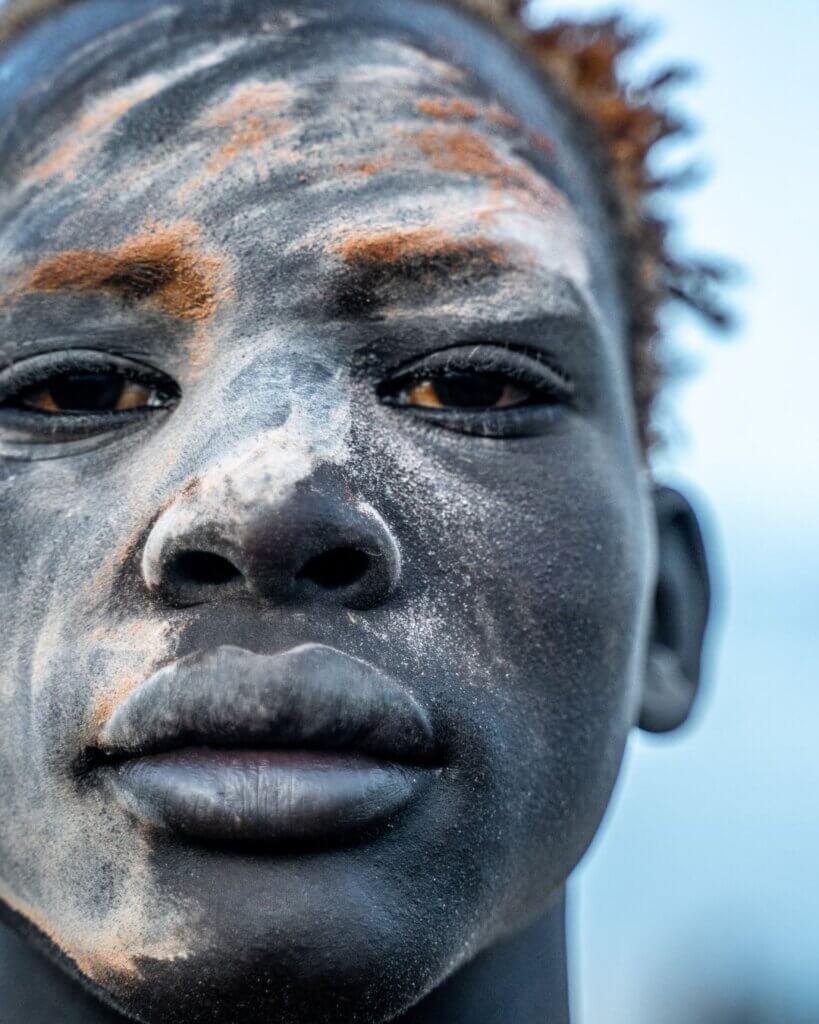
Visas and Security
Getting a visa for South Sudan is relatively straightforward once you’ve secured a guide or tour company. Most nationalities need to apply for an e-visa in advance, and this can be efficiently handled through your tour operator.
Here’s how it works: You obtain a letter of invitation from your operator, apply for the visa via the e-visa website, pay the required fee, and then patiently await the arrival of your visa, which typically takes between 1 to 2 weeks.
I’d recommend applying for the visa at least one month in advance. This way, you won’t have to worry about it in the days leading up to your South Sudan trip. Nevertheless, one of my three travel companions experienced a delay in receiving her visa. Fortunately, our operator, Mayom, personally intervened and visited the Ministry of Foreign Affairs to resolve the issue.
NOTE: if you plan to stay solely in Juba or intend to travel independently within South Sudan, I’ve heard accounts of travelers obtaining their letters of invitation from the hotels where they stayed.
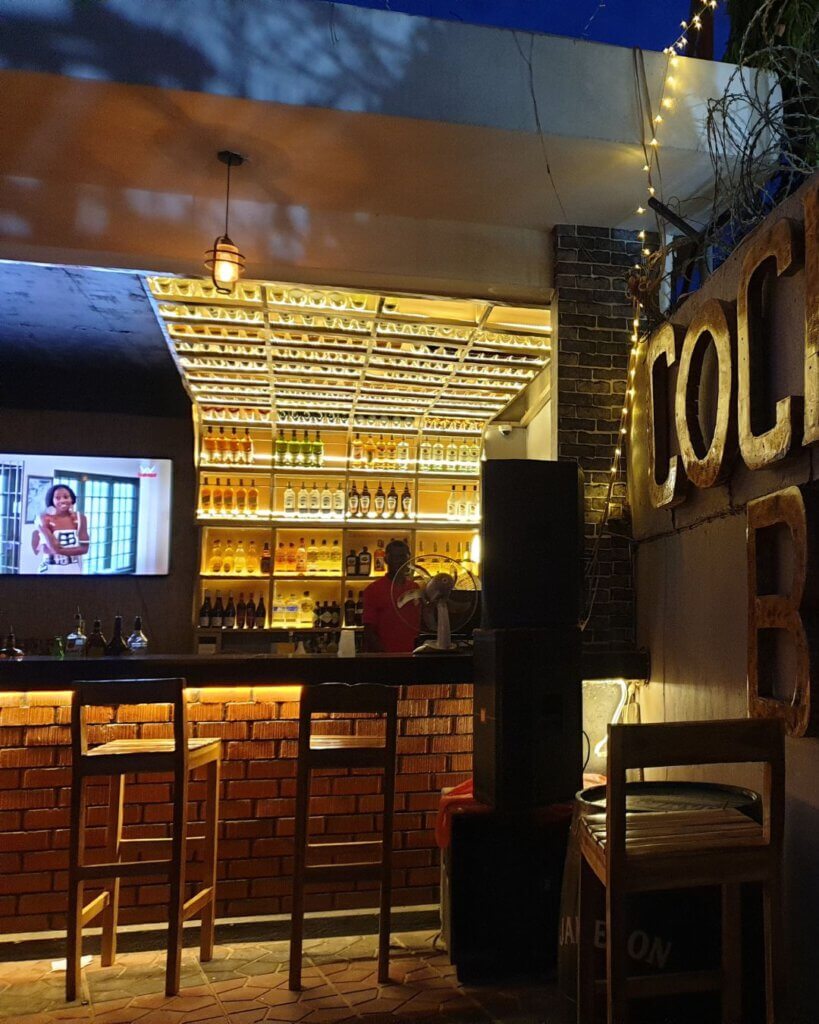
Regarding security, comprehending the situation in South Sudan can be exceptionally challenging. Personally, I felt extremely comfortable and safe throughout the country. However, this might have been due to my limited understanding of the ongoing political dynamics. Most hotels have stringent security measures in place before allowing entry, and public photography is generally prohibited.
One of my friends went to the rooftop of our hotel and began filming a few videos. A short while later, two security agents entered our room and questioned him about his actions. Fortunately, we handled the situation calmly and prevented it from escalating.
NOTE: It’s worth noting that during your research about South Sudan, you’ll come across stories of individuals who faced serious consequences for seemingly minor transgressions. While I may not have the full context of these stories, it’s essential to remember that South Sudan is not Europe or North America. If you ever find yourself interrogated or harassed by an official, it’s crucial to remain composed and comply with their instructions. I’ve encountered a few idiots in countries like these who mistakenly believed they could outwit officials simply because they held a strong passport.
I personally felt at ease in Juba, even when exploring independently on several occasions. The key is to remain composed and stay aware of your surroundings. My friends and I walked to a few bars in the area, explored the central market, and took short strolls around our hotel without any issues.
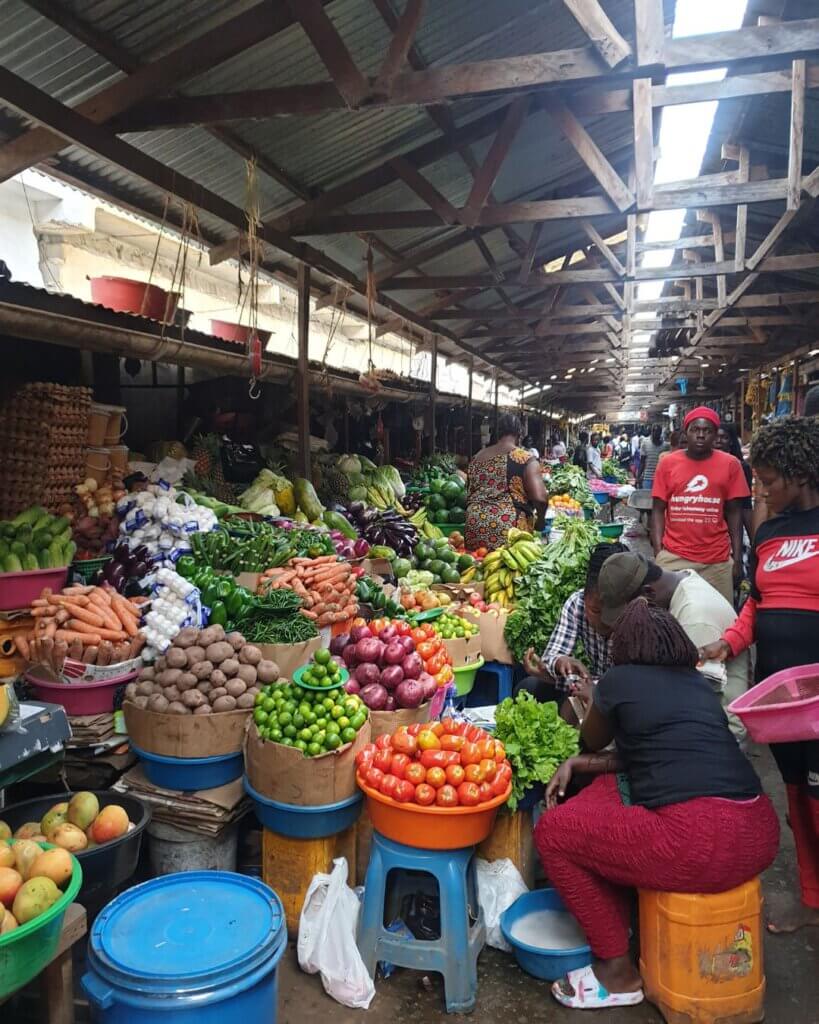
Getting Around
While having a tightly structured tour itinerary might initially appear limiting, we found it to be a successful way to make the most of our time in South Sudan. We planned a six-day itinerary (not counting arrival and departure, as most companies do) and extended our stay in Juba by three additional days.
During this time, we had the opportunity to meet a few United Nations Mission in South Sudan workers (a special shout-out to my Colombian friends working there). They introduced us to their favorite bars, restaurants, and local hangouts in Juba, offering a unique perspective on the city.
These extra days also made our South Sudan experience much more comfortable. We managed practicalities like obtaining SIM cards, delved deeper into exploring the city, and simply took some time to relax.
Furthermore, we were able to save some money by independently finding accommodation in Juba. Many hotels in the city are relatively expensive (starting 100 USD a night), and tour operators often choose the best options for their clients. We discovered a more affordable but still decent hotel, cutting our expenses to less than half.
However, outside of Juba, the situation is vastly different. South Sudan is largely underdeveloped, with minimal natural attractions beyond a few scattered houses. Military checkpoints are a frequent occurrence, approximately every 20 kilometers. Each checkpoint involved our guide exiting the vehicle, engaging in lengthy discussions with officers, and making bribe payments to proceed.
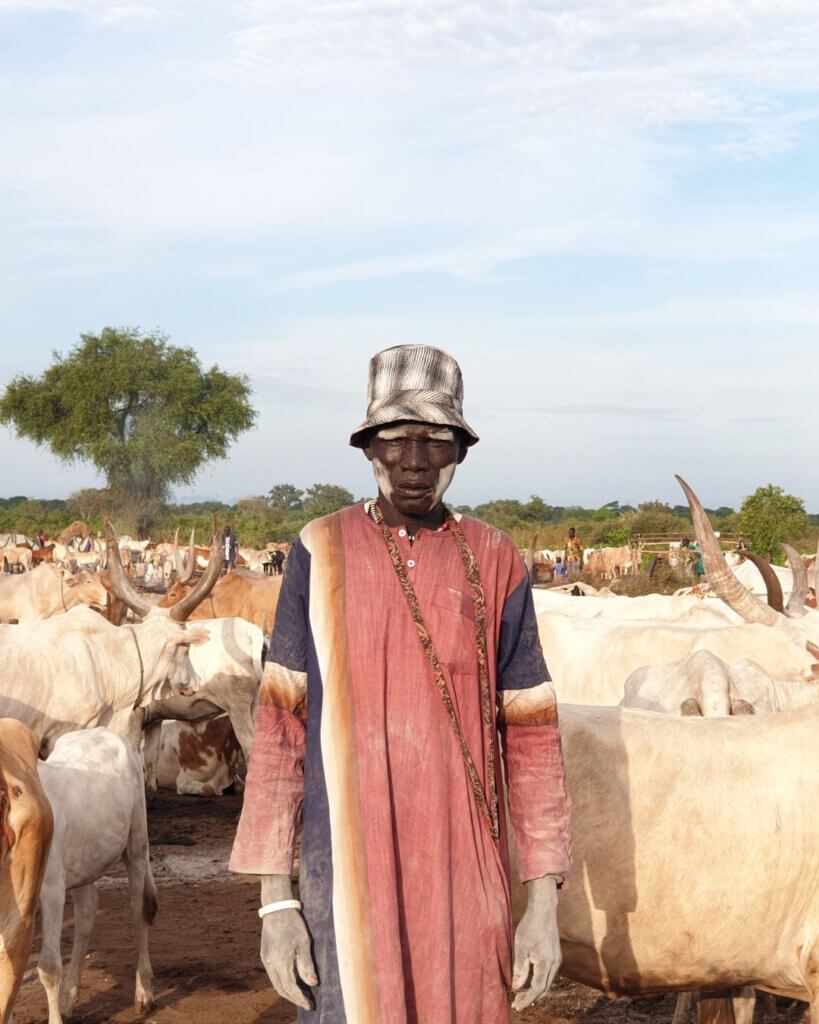
What to Expect to See in South Sudan
South Sudan offers a unique opportunity to explore ethnic diversity. With approximately 60 distinct tribes, each with its own rich culture and traditions, the country is a remarkable showcase of cultural differences. I was personally astounded by the chance to spend time with these diverse groups, which left me fascinated.
Visiting ethnic groups is the primary draw of South Sudan as a travel destination. It’s not the place for swimming in pristine lakes or mountain climbing. South Sudan primarily provides a window into the lives of some of the world’s most captivating ethnic groups, offering a genuine glimpse into their daily routines.
This also means that tourism in South Sudan differs significantly from other destinations. There are no specially staged performances or locals concealing their smartphones upon your arrival in their communities. Instead, you become a quiet observer of these people’s everyday lives, an experience some travelers might find slow or uneventful.
Read more: How to plan a trip to the Danakil Depression
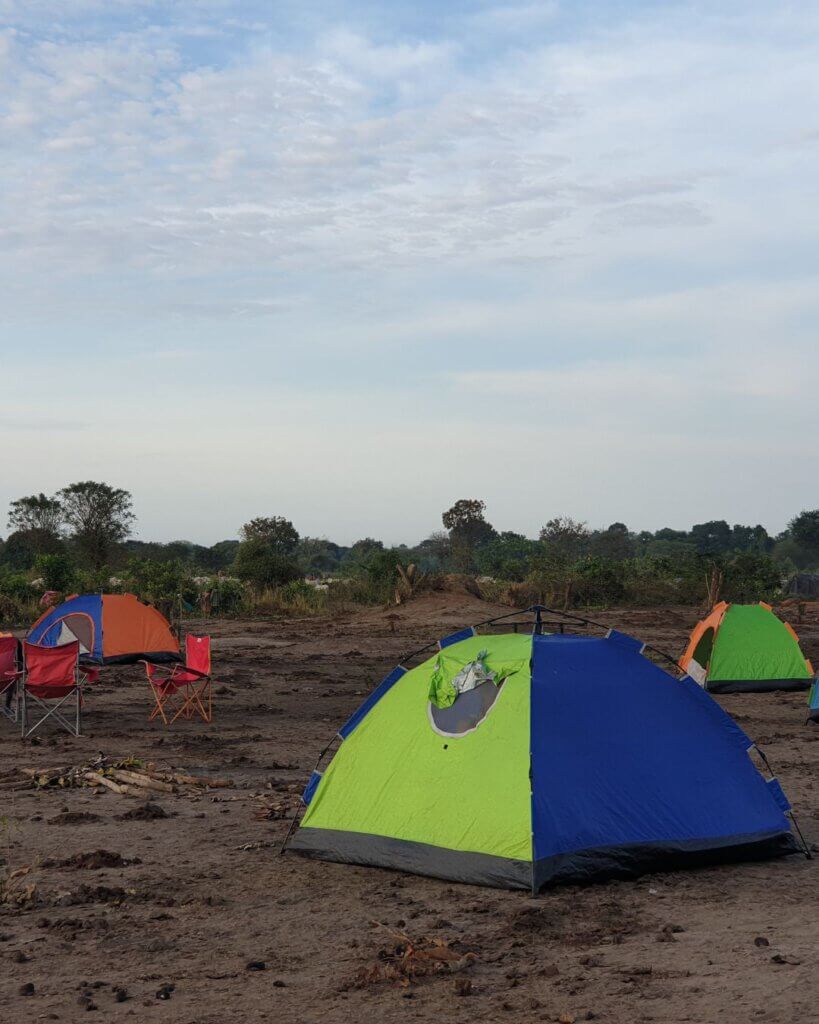
Tribes in South Sudan
When planning a trip to South Sudan, your guide may ask which tribes you’re most interested in visiting, although this question might seem irrelevant if you’re not familiar with these tribes. During my journey, I had the opportunity to visit the Dinka and the Mundari tribes, but here are some of the other groups I was offered to see:
Mundari:
The Mundari are known for their cattle herding, especially the Ankole-Watusi breed. They lead a semi-nomadic lifestyle, following their herds in search of grazing land. This tribe has a reputation for living a very primitive life centered around cattle. Mundari men often wear vibrant headscarves and body paint. This tribe is a MUST when visiting South Sudan and they are also known for washing their hands and bodies with cow urine and primarily consuming milk.
Dinka:
The Dinka tribe is the largest in South Sudan, recognized for their cattle herding and farming. They have a unique tradition of cattle camps where young men tend to the herds. Dinka individuals are characterized by their tall, slender physique, and they place great importance on songs and dances in their culture. If you visit the Dinka tribes around Juba, you’ll notice that many have adopted more Western clothing and aspire to leave their communities.
Nuer:
The Nuer are pastoralists who rely on cattle and are distinguished by intricate scarification patterns on their bodies. Their social structure is organized around clans and age sets, and cattle raids have been a significant part of their culture. To visit the Nuer, we would have had to cross the country, which was a bit beyond our budget.
Toposa:
The Toposa are nomadic cattle herders with a warrior culture. They have a unique initiation ceremony for young men, marked by ritual scarification. The Toposa often wear distinctive beaded jewelry and are skilled in crafting weaponry. I regret not having seen the Toposa; their scarification rituals are gradually disappearing, and it’s uncertain if such an opportunity will arise again.
If I were to revisit South Sudan, I would prefer to spend time with the Toposa and the Mundari, venturing as far from the city as possible.
Read more: Meeting The Mundari People Of South Sudan
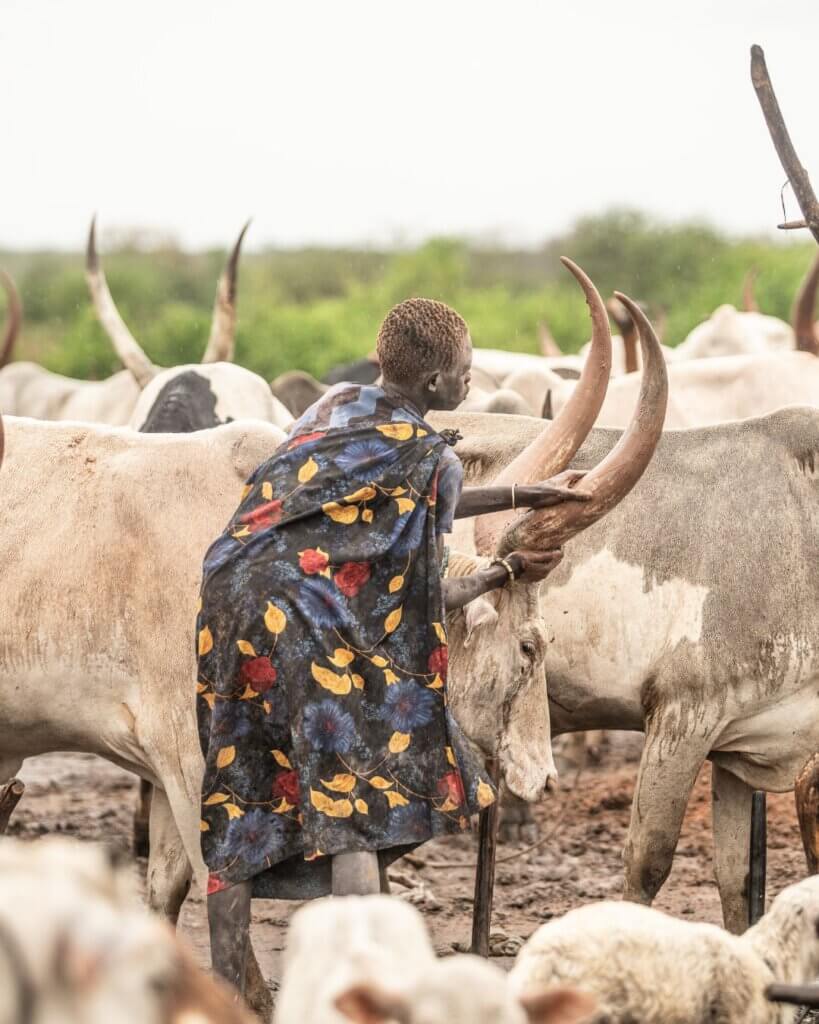
A Day with the Mundari
Spending a day with the Mundari was one of the biggest highlights of my travels. However, what was a highlight for me might be a nightmare for someone else. Here are a few things to keep in mind if you want to spend time with the ethnic groups of South Sudan.
Most short tours typically involve spending one night with the Mundari tribe, allowing you to witness the highlights of their daily life. Upon arriving at the cattle camp, you’ll be captivated by the surreal scenery, with smoky fires against a backdrop of a setting sun. This is the heart of the Mundari tribe.
The smoke results from burning dried cow dung to ward off mosquitoes, which effectively works. I didn’t take any anti-malarial medication and wasn’t bitten by a single mosquito during my stay. However, this time passes quickly, especially if you’re part of a group tour, as many people strive to capture the perfect photograph. There is no electricity once the sun sets, so there is not much to do afterwards besides an early sleep.
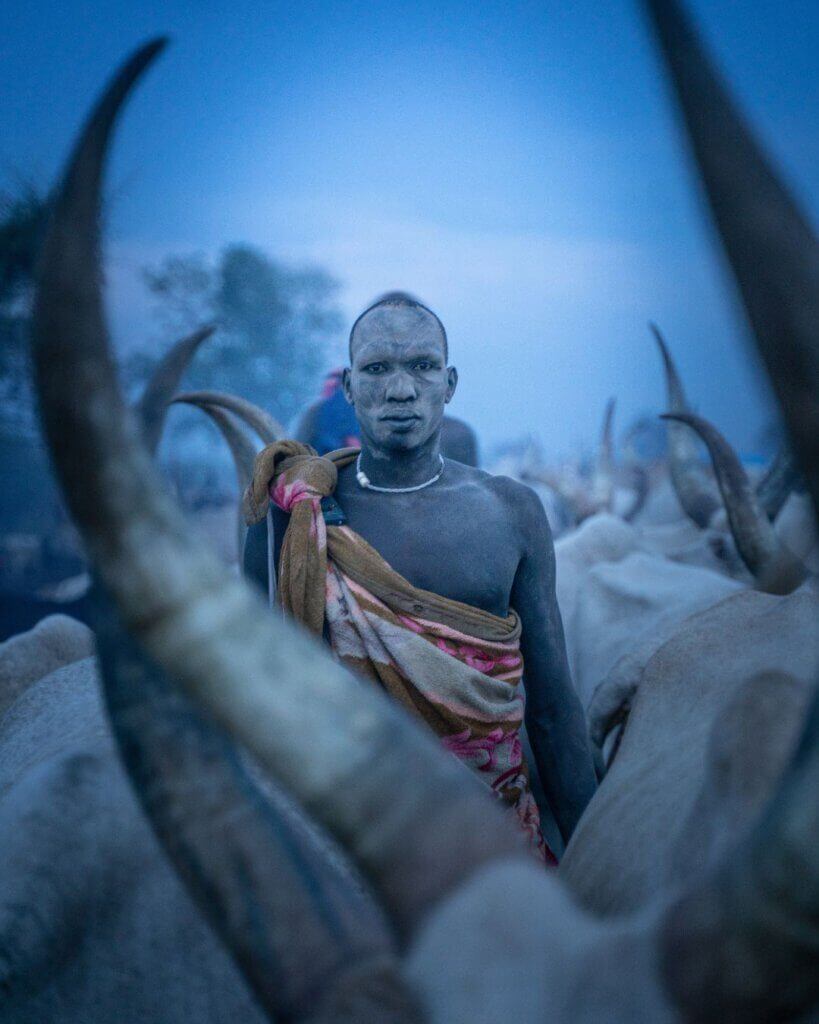
Mornings with the Mundari are equally spectacular. At dawn, they awaken, clean the cows, and gather dung. By 9 or 10 a.m., the camp is nearly empty. If you have a knowledgeable guide, they might arrange for the community to demonstrate how they clean themselves with cow urine or engage in traditional wrestling.
Our visit was a bit different. We spent three nights with the Mundari and quickly realized that between 10 a.m. and 4 p.m., there’s not much activity. Most Mundari sit in the shade, waiting for the day to pass, while women prepare meals for their families.
Nonetheless, this downtime provided us with a valuable opportunity to rest, engage in conversations with local Mundari, gain insights into their lives, and avoid rushing from place to place. Spending more time with them also led to some unexpected discoveries. We heard the entire community singing late at night while a woman gave birth, one of our friends demonstrated his judo skills to the local fighters, and we observed the Mundari community trading hashish with other tribes and smoking it in the day.
NOTE: Despite the frequent appearance of AK47 rifles in photos of the Mundari (I guess they are just for the likes), I only encountered one firearm during my entire visit to the tribes, which belonged to the leader responsible for herding the cattle.
Read more: Hidden Gems of Africa: How to plan a trip to Niger
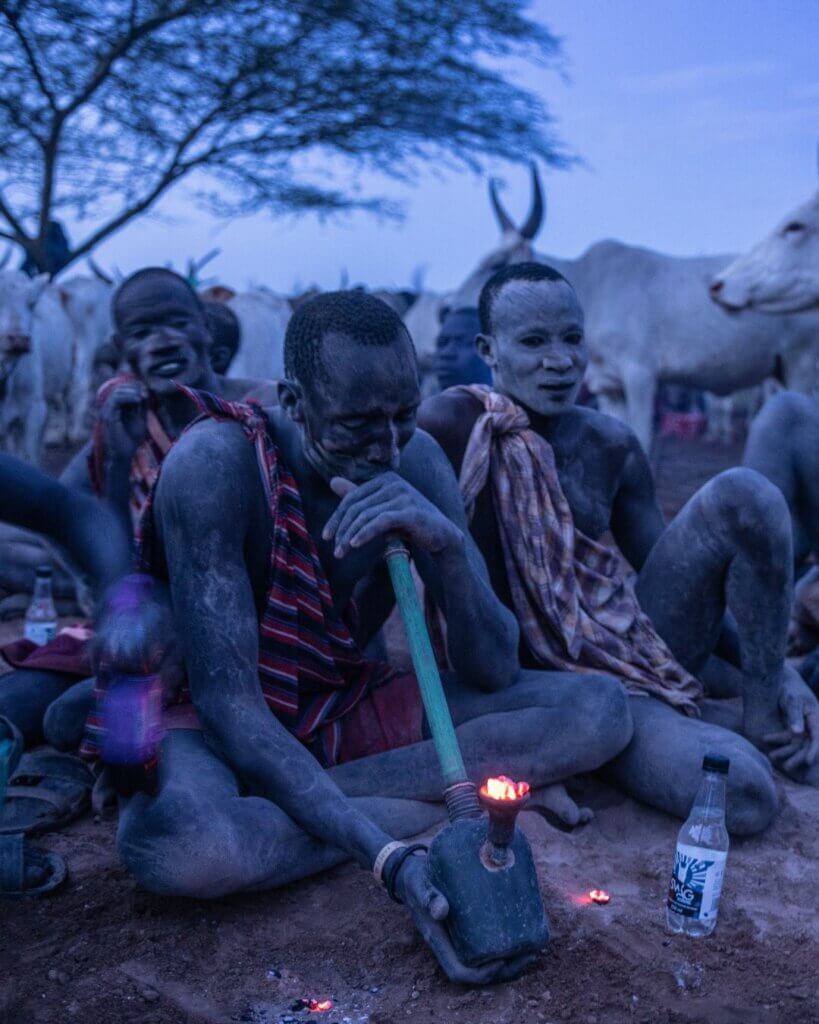
South Sudan in a Nutshell
Here are some essential points to keep in mind when traveling to South Sudan:
- Cash Is King: While South Sudan has made some progress in its banking system, it’s still a good idea to arrive with a significant amount of cash. Bringing $1500-2000 USD is recommended. Although there are some banking options, it’s better to be prepared for situations where electronic payments may not be possible.
- Prepare for a Different Lifestyle: If you plan to visit South Sudan’s ethnic groups, be ready to embrace a simpler way of life. Expect to live without electricity, internet, and hot water for showers. Ensure you have backup power sources like power banks and extra camera batteries if photography is a priority.
- Leave Your Drone Behind: Drone use is strictly prohibited in South Sudan, and attempts to obtain permits are unlikely to succeed. If you bring a drone, it will likely be confiscated at the airport and returned to you only when you depart.
- Respect Privacy: Always ask for permission before taking photos, especially in tribal communities. In some places, photography might not be allowed at all. When visiting tribes, the community chief will typically inform residents of your visit, and many will be willing to participate in your photography.
- Airport VIP Service: There’s a VIP airport service available for $30 upon arrival and $50 at departure. This service includes assistance with passport and customs procedures. However, many travelers find it unnecessary, as airport procedures can be swift, especially with the help of a local guide.
- Stay Connected: You can easily get an MTN South Sudan SIM card for a few dollars, which provides mobile internet access. While coverage is generally good, expect some connectivity challenges, especially in remote areas with the tribes.
Read more: Visiting Lac Assal and Lac Abbe in Djibouti
